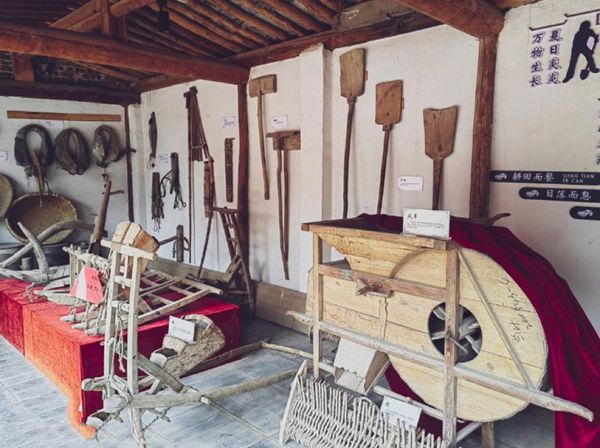Gansu's ancient pear orchard system earns global agricultural heritage status

A panoramic view of the Shichuan ancient pear orchard in Gaolan county, Lanzhou. [Photo/Wechat account of Lanzhoufabu]
On May 19, the Gaolan Shichuan Ancient Pear Orchard System in Gaolan county, Lanzhou, Gansu province, was officially designated by the UN Food and Agriculture Organization (FAO) as a Globally Important Agricultural Heritage System (GIAHS).
Located along the terraced banks of the Yellow River in Lanzhou's Gaolan county, the Shichuan system is home to over 9,000 pear trees over 100 years old, including exceptionally rare clusters dating back 400 years. Since the Ming Dynasty (1368-1644), local farmers have cultivated these orchards using a technique known as "gaojiayunpeng" or "fields in the sky" – wooden frameworks supporting pear branches to create elevated "aerial orchards" that thrive in arid conditions while naturally resisting pests. The system also involves the use of ladders in a practice called "tianbashi", or high-altitude pruning, allowing farmers to manage pear trees that grow over 10 meters tall.

Gaolan Shichuan Ancient Pear Orchard System in Gansu province. [Photo provided to chinadaily.com.cn]
To safeguard this living heritage, Gaolan county has implemented digital "one-tree-one-record" tracking, established dedicated orchard and farming culture museums, and successfully registered the "tianbashi" technique as provincial intangible cultural heritage item. This GIAHS designation not only recognizes the orchard's significance as an ecological model for the Loess Plateau but also demonstrates China's innovative approach to sustainable rural development through "ecological industrialization" – transforming environmental stewardship into economic opportunity.

A farming culture museum in Gaolan county, Lanzhou. [Photo/Wechat account of Lanzhoufabu]
-
As AI encounters Dunhuang's art, the ancient caisson ceiling bridges centuries to the present.
View all stories

 Gansu thrives from green development
Gansu thrives from green development  >
>